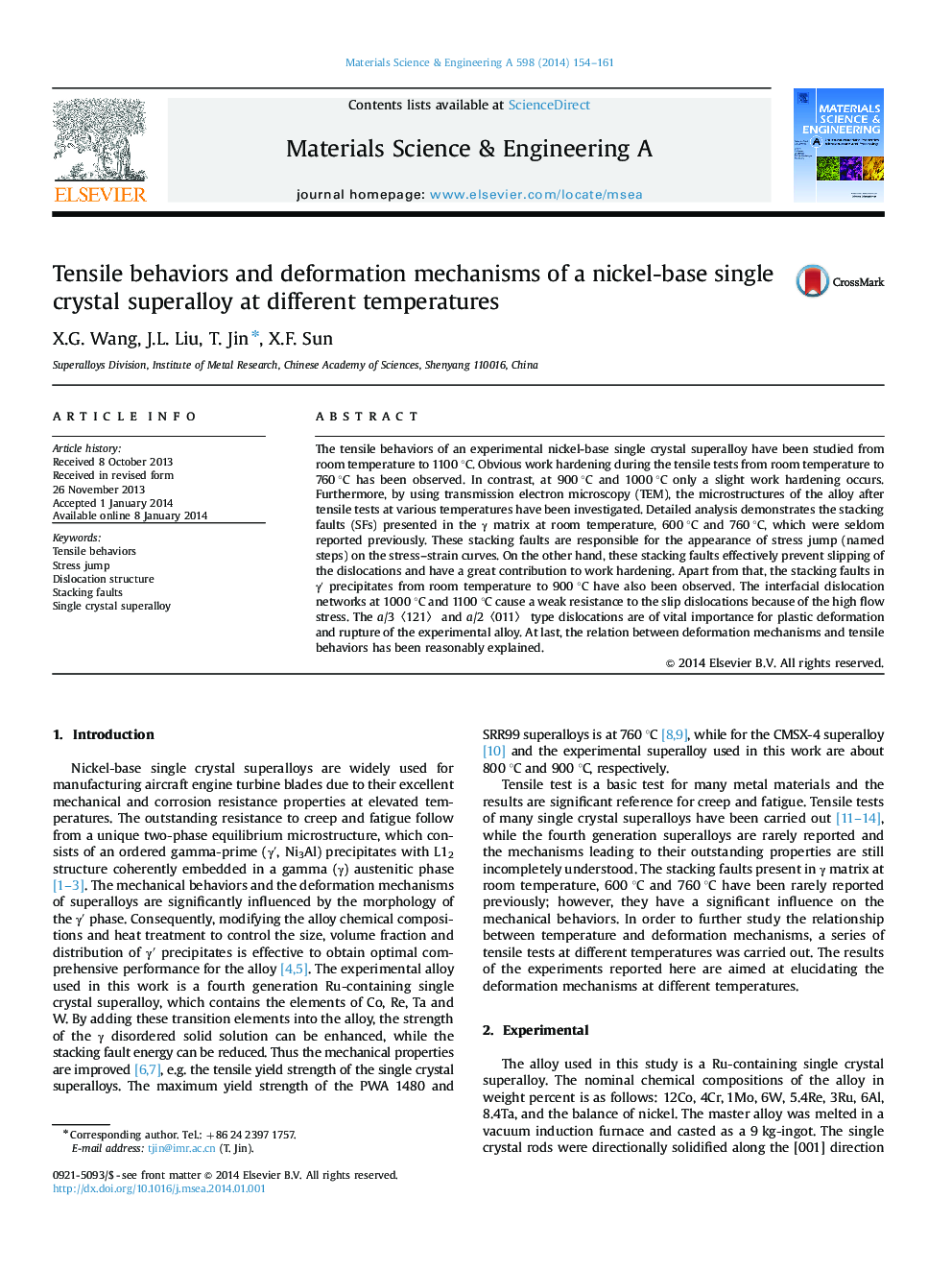| Article ID | Journal | Published Year | Pages | File Type |
|---|---|---|---|---|
| 1575349 | Materials Science and Engineering: A | 2014 | 8 Pages |
Abstract
The tensile behaviors of an experimental nickel-base single crystal superalloy have been studied from room temperature to 1100 °C. Obvious work hardening during the tensile tests from room temperature to 760 °C has been observed. In contrast, at 900 °C and 1000 °C only a slight work hardening occurs. Furthermore, by using transmission electron microscopy (TEM), the microstructures of the alloy after tensile tests at various temperatures have been investigated. Detailed analysis demonstrates the stacking faults (SFs) presented in the γ matrix at room temperature, 600 °C and 760 °C, which were seldom reported previously. These stacking faults are responsible for the appearance of stress jump (named steps) on the stress-strain curves. On the other hand, these stacking faults effectively prevent slipping of the dislocations and have a great contribution to work hardening. Apart from that, the stacking faults in γ' precipitates from room temperature to 900 °C have also been observed. The interfacial dislocation networks at 1000 °C and 1100 °C cause a weak resistance to the slip dislocations because of the high flow stress. The a/3ã121ã and a/2ã011ã type dislocations are of vital importance for plastic deformation and rupture of the experimental alloy. At last, the relation between deformation mechanisms and tensile behaviors has been reasonably explained.
Related Topics
Physical Sciences and Engineering
Materials Science
Materials Science (General)
Authors
X.G. Wang, J.L. Liu, T. Jin, X.F. Sun,
